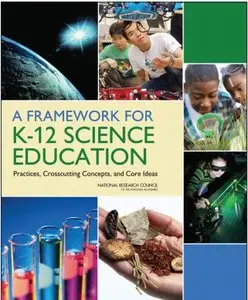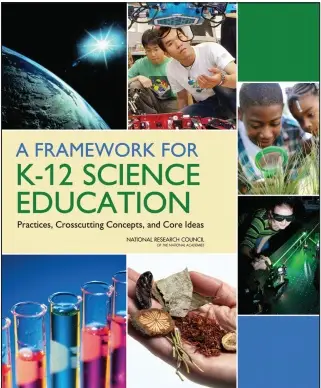A Framework for K-12 Science Education: Practices, Crosscutting Concepts, and Core Ideas
Committee on Conceptual Framework for the New K-12 Science Education Standards; National Research Council
NAS Press | 2011 | ISBN: 0309217393 0309217423 9780309217422 | 283 pages | PDF | 3 MB
Committee on Conceptual Framework for the New K-12 Science Education Standards; National Research Council
NAS Press | 2011 | ISBN: 0309217393 0309217423 9780309217422 | 283 pages | PDF | 3 MB
This book identifies three dimensions that convey the disciplinary core ideas and practices around which science and engineering education in these grades should be built. These three dimensions are: cross-cutting concepts that unify the study of science and engineering through their common application across these fields; scientific and engineering practices; and core ideas in four disciplinary areas: physical sciences, life sciences, earth and space sciences, and engineering, technology, and the applications of science.
Science, engineering, and technology permeate nearly every facet of modern life and hold the key to meeting many of humanity's most pressing challenges, both present and future. To address the critical issues of U.S. competitiveness and to better prepare the workforce, Framework for K-12 Science Education proposes a new approach to K-12 science education that will capture students' interest and provide them with the necessary foundational knowledge in the field.
Framework for K-12 Science Education outlines a broad set of expectations for students in science and engineering in grades K-12. These expectations will inform the development of new standards for K-12 science education and, subsequently, revisions to curriculum, instruction, assessment, and professional development for educators.
Framework for K-12 Science Education is the first step in a process that will inform state-level decisions and provide a research-grounded basis for improving science teaching and learning across the country.
The book will guide standards developers, curriculum designers, assessment developers, teacher educators, state and district science administrators, teachers, and educators who work in informal science environments.
Contents
Executive Summary
PART I: A Vision for K-12 Science Education
1 Introduction
2 Guiding Assumptions and Organization of the Framework
PART II: Dimensions of the Framework
3 Dimension 1: Scientific and Engineering Practices
4 Dimension 2: Crosscutting Concepts
5 Dimension 3: Disciplinary Core Ideas: Physical Sciences
6 Dimension 3: Disciplinary Core Ideas: Life Sciences
7 Dimension 3: Disciplinary Core Ideas: Earth and Space Sciences
8 Dimension 3: Disciplinary Core Ideas: Engineering and Technology
PART III: Realizing the Vision
9 Integrating the Three Dimensions
10 Implementation
11 Diversity and Equity
12 Guidance for Standards Developers
13 Looking Toward the Future: Research to Inform K-12 Science Education Standards
Appendixes
A Committee Response to Public Feedback
B References on Teaching and Learning
C Biographical Sketches of Committee Members
D Design Teams Roster
with TOC BookMarkLinks



